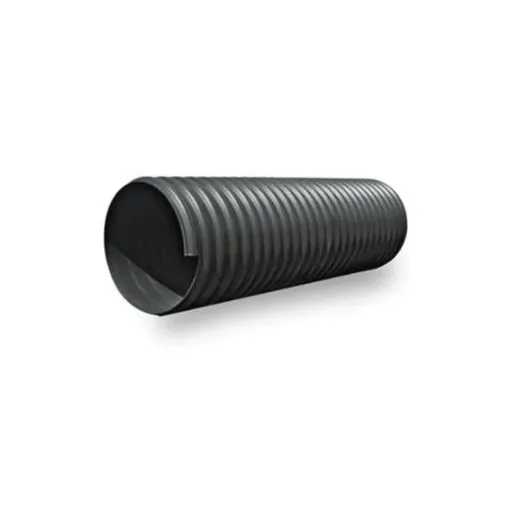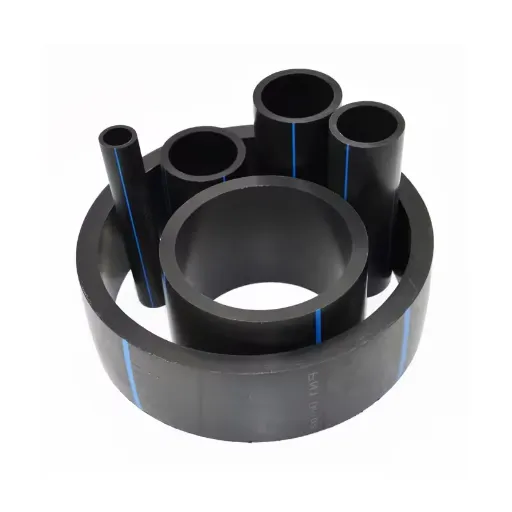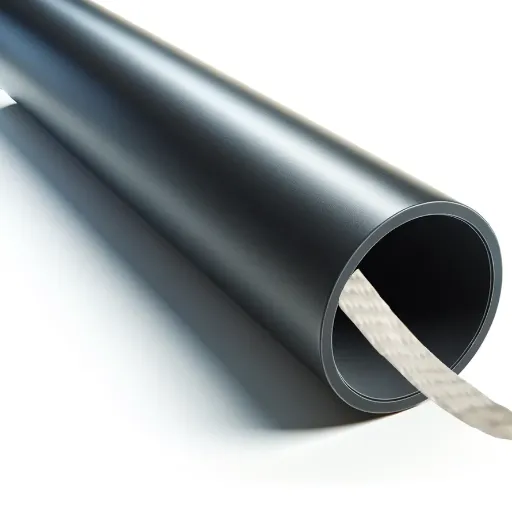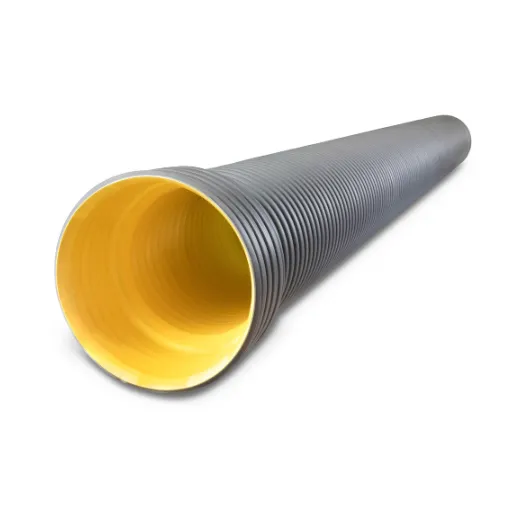Typically, in selecting the appropriate material for underground piping systems, cost plays a major role in the whole process. High-Density Polyethylene (HDPE) and Reinforced Concrete Pipe (RCP) are two among the most common materials, which can be used in various applications— from municipal drainage systems to industrial projects. However, which of the materials is more cost-effective and durable, and performing better? The blog will be discussing the very issues regarding the pipes’ prices and their respective pros and cons, as well as their long-term returns. Whether you are a contractor, engineer, or infrastructure project decision-maker, the financial consequences of these materials will be revealed that would assist you in making a well-informed choice.
Introduction to Pipe Materials
High-Density Polyethylene (HDPE) and Reinforced Concrete Pipe (RCP) are two of the most common types of materials applied in piping systems for the infrastructural development of various projects. Each of them has its own distinct advantages and challenges that render it suitable for a specific application depending on project specifications, the surrounding environment, and budget limitations.
HDPE pipes exhibit lightness, bending ability, and a high degree of resistance to both corrosion and the effects of chemicals. Their long life span and user-friendly installation elevate the cost of labor and thus they are considered one of the most commonly selected materials for quick deployment projects in both urban and rural areas. Besides, HDPE is also recognized for resisting earthquake tremors and handling changing loads thanks to its pliability.
RCP however is primarily used when a project’s requirements demand the material to bear heavy-loads constantly and non-stop. So it is commonly applied for the construction of roads and large drainage systems. RCP pipes do not easily get compressed and that is one of their most notable advantages, while they also protect themselves very well against getting damaged by UV radiation and fires. Unfortunately, the very thing that gives RCP pipes the above-mentioned advantages – heaviness, coupled with labor-intensive installation – may also inflate the initial costs when it comes to installation in areas with difficult terrain.
The tricks and the traps involved in dealing with HDPE and RCP pipes are to be fully grasped for the selection of the right material for any given project. To put it differently, while HDPE is a cost-effective and flexible solution in the right places, RCP has the brute strength and toughness to survive the tough, high-load areas. The longevity of both materials will still be very much alike if the contexts chosen for their application are proper.
Importance of Cost Analysis in Pipe Selection
Cost analysis is an essential aspect of the decision-making process regarding pipe material for the project. The costs of the material, the expenses related to installation, and maintenance can be evaluated by the project planners and the decisions can be made accordingly which will not only meet the performance needs but also the budget constraints. Not doing a complete cost analysis might result in the project being delayed or the performance being unsatisfactory over the years, or worse, the project being incurred unnecessary expenses.
Among others, HDPE pipes are usually considered as a good choice due to their lower initial material cost and reduced transportation expenses associated with their lightweight property, long-term flexibility, and so on. They are suitable for projects that require changes in laying such as those located in the uneven area or areas with a high probability of ground movement. However, they may not be able to prove their long-term effectiveness totally depending on the factors such as the environmental stress resistance and the maintenance costs.
RCP material, in contrast, is characterized by high initial cost which is compensated by the material’s strength and durability. The long life and extraordinary load-bearing capacity often turn it into a cost-effective option in the case of infrastructure projects that require not only strength but also reliability. It is the environmental conditions, projected lifetime, and failure risk that are among the factors to be taken into account by the decision-makers when analyzing costs in order to ensure that the selected material offers the highest value possible for the project in all aspects.
Key Factors Influencing Pipe Costs
When considering pipe costs, there are a number of different factors that are all very important and have an impact on price and value in general. One of the most important factors is the type of the material. The most commonly used materials are steel, PVC, and concrete, which all, of course, differ a lot in price because of their respective properties, and, besides that, these factors are also influenced by durability and availability. For example, steel pipes might be more expensive at the start but also offer very good strength and durability so that they are used for high-pressure or industrial applications. Plastic pipes, on the other hand, are more affordable than steel pipes, and they are also very light, so they can be used in residential or low-pressure systems, for instance.
Labor and installation costs associated with pipe materials also count as significant factors. Heavy materials like concrete may lead to the need for more skilled workers and extra equipment, resulting in higher expenses in total. Moreover, the difficulty of the project that may involve trenching and preparing the site further can increase the costs. Considering installation requirements in great detail will help you pick the most affordable option that is also reliable and efficient.
The discussion of maintenance and lifetime accompanied by the material selection has a considerable impact on the total costs of the pipes. The truth is that the materials that are most purchased and least cared for do often have the longest lifespans and often require fewer inputs to keep them functioning, thus, shifting the burden of costs from the initial purchase to maintenance. Thus, the decision-makers have to make a comparison between the initial costs and possible future expenses, making sure that the material selected is not only suitable for the project’s financial plan but its durability requirements as well. It is possible, however, that the above mentioned factors can open up ways for organizations to make wise and thus, beneficial decisions both for the performance and the sustainability of the pipe system.
Cost Comparison of HDPE and RCP
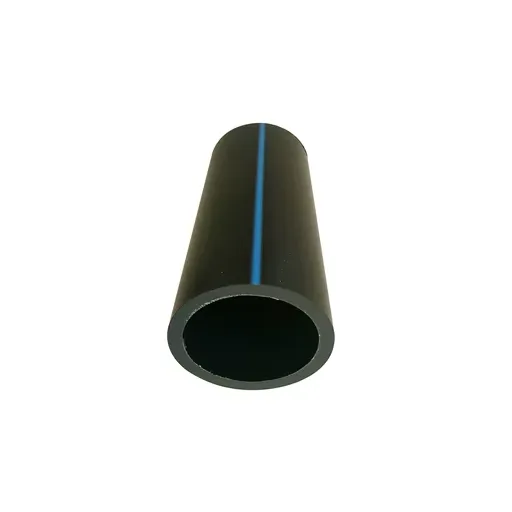
Material Costs of HDPE vs RCP
When compared with reinforced concrete pipes (RCP), HDPE pipes usually cost less, as well as benefiting from savings on weight, transportation, and maintenance.
| Key Point | HDPE | RCP |
|---|---|---|
| Material Cost | Lower | Higher |
| Weight | 222.64 lbs/ft | 1,114 lbs/ft |
| Transport | Cheaper | Expensive |
| Durability | Corrosion-free | Durable |
| Maintenance | Lower | Higher |
| Applications | Flexible | Rigid |
Installation Costs: A Detailed Breakdown
The cost to install HDPE pipes is significantly different from that of RCP pipes due to the nature of the materials and the way they are handled. The weight of HDPE pipes is considerably less than that of RCP pipes, which makes their installation easier and quicker. Lower installation costs are the direct result of less dependence on heavy machines and skilled labor. In addition to this, the flexibility of HDPE allows it to be installed through the use of trenchless methods such as horizontal directional drilling, which is the least invasive for the surrounding environment and thus minimizes the costs for restoring the site.
Conversely, RCP pipes being heavy require a lot more robust machinery and equipment for their transportation and installation. The strength of RCP makes it imperative to use cranes and other heavy machinery that in turn cause the labor and equipment costs to rise. Moreover, the problem with RCP pipes is that they are not very pliable and thus require more careful trenching to get their correct alignment and positioning which, again, leads to increased installation costs. Still, RCP is chosen for some applications owing to its strength and rigidity.
The analysis of the lifetime value of the materials shows that even though the cost to install HDPE is lower, this won’t make the project cost effective in case of materials requiring flexibility or quick deployment. Nevertheless, for high-load and heavy-traffic-prone areas, the durability of RCP may well be the reason for the higher initial investment in installation to be justified. In the end, the decision to go with either HDPE or RCP should take into account not only the installation costs but also the performance and sustainability over time.
Durability Under Various Conditions
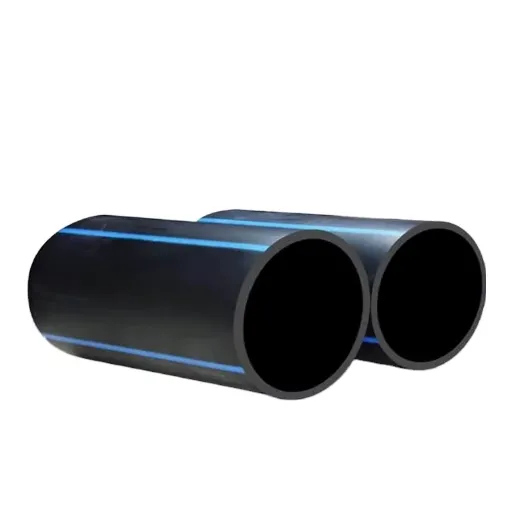
Strength and Longevity of HDPE
The High-Density Polyethylene (HDPE) is known for its great strength-to-density ratio, which is one of the reasons it is considered to be among the most durable and flexible materials that are suitable for a variety of applications both in industries and environmental grounds. It has been made to resist extreme situations, and, thus, it reveals great resistance to impact, stress, and chemicals. In fact, it is most effective in places that have noxious or highly moistened materials, as its non-reactive surface layer allows prevent the material from being degraded over time.
HDPE has been through the toughest kinds of testing and has such a good reputation that it is incorporated in smart buildings with temperature ranges of -40°F to 140°F. The material is also of high performance and has a long life—over 50 years sometimes for pipes and construction—contributing to decreased maintenance and replacement costs. Thus, the durability of HDPE contributes to its use in water and gas pipelines, landfill liners, and storage tanks, among others.
The life-cycle data can be incorporated by the engineers and the stakeholders. They can then make use of HDPE’s characteristics in terms of both economical and ecological advantages. The low probability of material inoperability plus its recycling opportunity justifies that HDPE is the perfect material for eco-friendly, long-lasting infrastructure projects.
Reinforced Concrete Pipe Durability
Reinforced concrete pipes (RCP) are an absolute technical marvel in infrastructure projects due to their strength, durability, and multi-functionality. These pipes are designed to bear the maximum load, thus fitting perfectly for stormwater drainage, culverts, and sewage systems applications. The high-strength concrete and steel reinforcement that work together to form the major material of the pipe actually are the main features of the pipes’ durability providing remarkable structural integrity and sturdiness against the overhead pressure.
The advancements in concrete technology have almost succeeded in making RCP completely invulnerable through resistance not only to chemical degeneration but also to abrasion and freezing-thawing cycles. RCP is often termed a pipe with a lifetime of over 50 years, given proper installation and maintenance, primarily due to its feature of resisting corrosion and cracking in varying environmental conditions. Moreover, RCP’s retaining structural performance capability in both shallow and deep bury installations demonstrates its reliability for long-term usage to the fullest.
With the ballpark of modern-day engineers, reinforced concrete pipes will be made to perform optimally with the application of advanced design practices and material innovations.
Environmental Factors Affecting Pipe Integrity
The Environmental factors have a very important part in the life span and the quality of the reinforced concrete pipes (RCPs). These pipes can be greatly affected in their life span by the soil types, moisture levels, and the chemical contaminants like sulfates or chlorides. For example, high sulfate contents in soil or water can cause the cement matrix to shrink and hence lose its surface after some time. In addition, if there are repeated freezing and thawing in the cold regions, there might be expansion and cracking of the pipes which would then end up compromising their strength.
Moreover, the varying levels of groundwater and the existence of highly corrosive microorganisms can eventually result in the pipes rotting away. One major threat in sewers is the microbial-induced corrosion, and it is usually caused by bacteria that secrete acid to dissolve sulfate. Besides this biological problem, there is the issue of external loads from noise and vibrations of traffic or the shifting of the earth which brings about stress that may worsen the existing weaknesses.
When these environmental factors are considered during the planning and installation stages, it becomes easy for engineers to use certain protective measures like using cement that is resistant to sulfates, putting on coatings, or setting up cathodic protection. Taking a proactive stance allows the infrastructure to be tougher against the challenges posed by different environmental conditions thus the promise of lasting infrastructure.
Installation Processes for HDPE and RCP
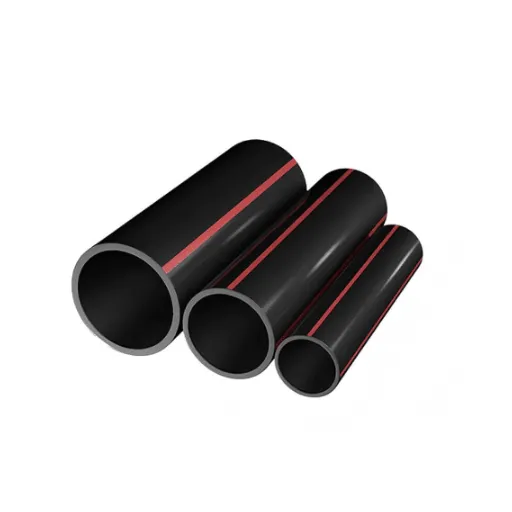
Installation Techniques for HDPE Pipe
The usage of High-Density Polyethylene (HDPE) pipes would be a good thing if the different techniques employed for their installation would be precise, as this is the only way to optimize them for performance and life span. HDPE pipes enjoy a wide field of applications because they are flexible, resistant to chemicals, and very strong. The pipeline installation process is outlined in the following key steps and considerations:
- Trenching and Site Preparation: The trench must be excavated properly before installation to the right depth and width, taking into account the soil conditions and the diameter of the pipe. It is very important to use a stable, even bedding material, such as compacted sand or granular material, to provide adequate support and reduce the stress on the pipe.
- Fusion and Joining Techniques: Heat fusion methods are the main joining method for HDPE pipes, such as butt fusion or electrofusion. These techniques create a leak-free, uniform joint and the use of extra sealants or couplings is not needed. It is vital to hold the right temperature and alignment during the fusion process to connect reliably.
- Backfilling and Compaction: After the pipeline has been laid down in the trench, then backfill layers should be placed with soft, but firm, compaction surrounding the pipe. Materials should be free of any sharp objects that might cause damage to the pipe. Adequate compaction makes sure that the pipe keeps its straightness and does not get deformed under soil pressure.
- Inspection and Testing: The pipeline should visually be inspected after installation to confirm proper alignment, the integrity of joints, and good bedding. Hydrostatic or pneumatic pressure testing is used to not only determine the system’s reliability but also to identify leaks that might occur.
- Adaptation to the Environmental Conditions: Thermal cycles result in HDPE pipe volume expansion and contraction. To avoid such thermal expansion, the installation can either incorporate expansion joints or provide enough slack in the layout of the pipeline. Furthermore, the use of protective measures such as UV-resistant coatings or burial at recommended depths still secures pipes against environmental conditions.
Follow-up of these installation practices guarantees the efficient performance of HDPE systems throughout the broad range of applications such as municipal, industrial, or agricultural areas. The combination of industry standards and proper planning and execution will result in the maximum durability and efficiency of HDPE installations.
RCP Installation Methods and Challenges
Reinforced Concrete Pipe (RCP) installation is quite a complex process and careful planning as well as compliance with regulations played an important role in the long-term reliability and performance of the entire system. One of the most popular techniques is trench installation, where the pipe is buried in a trench that is excavated with extreme care so that the pipe’s structure is supported and the pipe is also protected from external loads through this mechanism. The proper bedding which consists of compacted granular material usually is very important in preventing uneven stress distribution and thus potential pipe deformation. Connections where the pipes meet also are of a great importance, and especially watertight gasketed joints which are often used to prevent infiltration or exfiltration.
The obstacles related to RCP installation can come from multiple sources, such as soil conditions, load-bearing requirements, and environmental limitations. Unfavorable soil conditions require the implementation of additional techniques like concrete encasement or subgrade stabilization in order to ensure the stability and longevity of the pipe. Moreover, misalignment between the joints during the installation process or inadequate compaction of the backfill could lead to system failure.
The installation issues are circumvented through the use of modern technology such as laser-guided grading machines and quality control testing that guarantees precise alignment and excellent performance. Employing such advanced tools along with best practices and having the coordination of skilled professionals leads to a large extent the effective addressing of installation complexities.
Joint Integrity and Inspection Procedures
For every piping system or connections that will be made, maintaining the integrity of joints is the key to the system’s longevity and safety. A very detailed inspection process will be able, in my opinion, to unearth not only the major weaknesses but also the minor ones, such as insufficient sealing, displacement, and degradation of the materials. Regularly checking also helps in early detection of the wear and tear signs which, if fixed in time, will prevent the system from going through long downtimes and costly replacements in the future.
I do not only look at joint integrity enhancement from the aspect of regular NDT (non-destructive testing) of the joints but also the installation of the joints with the use of top-notch NDT techniques like ultrasonic testing and radiography. The use of these methods allows for accurate assessments of the quality of joints without jeopardizing the integrity of the buildings at the same time. I also make sure that every single component installed during the process is built to last and is up to the industry standards and specs. The bolting is done to the correct torque, the gasket sealing is done uniformly, and the alignment is checked – these are my priorities.
Besides that, I also perceive that through documentation and proper compliance, one can maintain the integrity of the joint. Making thorough records of the inspection results, repairs, and maintenance schedules not only ensures accountability but also empowers informed decision-making. Working together with certified technicians and strictly observing codes of practice are the ways to my objective of securing and prolonging joint performance.
Real-world Applications and Case Studies
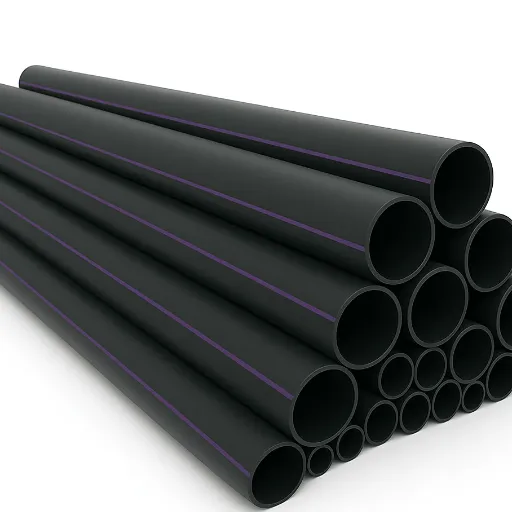
Case Study: HDPE in Municipal Infrastructure
Besides, the durability, flexibility, and cost-effectiveness have led to High-Density Polyethylene (HDPE) being the material of choice for municipal infrastructure. The application range of HDPE includes water distribution systems, sewage networks, and gas pipelines. Below are five critical details and numbers concerning its efficiency and prevalence:
- Longevity and Durability: HDPE pipes can last from 50 to 100 years in normal functioning conditions, thus significantly lessening the replacement and maintenance costs.
- Corrosion and Chemical Resistance: HDPE pipes can be compared to steel or concrete in that they are not subject to corrosion and are resistant to a wide range of chemicals making them suitable for the transportation of potable water as well as hazardous materials.
- Leak-free Joints: The fusion welding method adopted during HDPE installations produces continuous and leak-free joints that prevent water loss in municipal systems by as much as 80% when compared to traditional methods.
- Cost Efficiency: The initial capital cost may be higher but cities have claimed that they saved 30% in the long run on the infrastructure projects because of the lower maintenance and operating costs.
- Environmental Sustainability: Because HDPE is recyclable, it has a reduced carbon footprint during the stage of production and installation compared to other piping materials, thus it complies with the increasing environmental standards.
The above-mentioned advantages reveal HDPE as a multifunctional and trustworthy material that will enable the municipal projects to gain even more efficiency and sustainability in the infrastructure development.
Case Study: RCP in Stormwater Management
Reinforced Concrete Pipe (RCP) has always been a very reliable method in the management of stormwater systems, still it is able to deliver durability, strength, and versatility even under extreme conditions. Recently, the use of RCP in an urban stormwater project has proven its effectiveness in reducing flooding risks and thereby aiding the building of resilient infrastructure.
The project which was located in a rapidly growing metropolitan area demanded a stormwater solution capable of handling large volumes of water for a long period of time. RCP was chosen on the basis of its extremely high structural integrity which enabled it to bear heavy loads from traffic above and to be resistant to external environmental pressures. The system thus designed comprised of RCP of varying diameters which was used to collect, carry, and release stormwater in an efficient manner.
In the post-installation phase, the data collected showed a very significant decrease in surface flooding events and that the system had managed to hold the maximum runoff even during a record rainfall event. Moreover, the longevity of RCP made it less costly in terms of maintenance and thus the municipality was able to cut long-term costs considerably. The project was a showcase of how RCP’s design flexibility could cater to urban concerns while at the same time offering eco-friendly solutions that were in line with modern standards.
References
-
Evaluation of Backfill Materials and Installation Methods for HDPE and RCP Pipes
This document analyzes the as-installed costs of HDPE versus RCP pipes, including factors like manufacturing and installation. -
Large Diameter HDPE Pipe for Highway Drainage
This report highlights the cost differences between HDPE and RCP pipes, focusing on installation requirements and material costs. -
Plastic Pipe for Highway Construction Phase 2
This study compares HDPE and RCP pipes in terms of cost-efficiency and installation methods. -
Large Diameter HDPE Pipe for Highway Drainage
This source discusses the cost advantages of HDPE pipes when granular backfill is used, along with potential drawbacks. -
Standard Prices for Cost Estimating
This document provides standard cost estimates for HDPE and RCP pipes, categorized by diameter and material class.
Frequently Asked Questions (FAQ)
Q: What is the main difference in cost between HDPE and RCP pipes?
A: The primary factor in pricing difference between HDPE (High-Density Polyethylene) pipes and RCP (Reinforced Concrete Pipe) is their composition and installation methods. Generally, HDPE pipes have a lower initial cost and are more durable, whereas RCP pipes entail higher costs due to their structural requirements and heavy materials.
Q: How does the service life of HDPE compare to RCP?
A: The service life of HDPE pipes is very long and varies from 50 years onwards, while RCP, although, chemically and physically similar, can be also developed for a long lifetime but more often replaced due to the corrosive vulnerabilities of the pipe over time. So, in terms of life, HDPE is the winner.
Q: What factors contribute to the overall cost of HDPE vs RCP pipes?
A: Material prices, labor and maintenance costs, and more significantly, ease of installation impacts the overall cost of HDPE vs RCP pipes. Though RCP is of heavy material and hence needs more labor, equipment, and time for installation, on the contrary, HDPE pipes are lightweight and hence easier to install.
Q: Are HDPE pipes more sustainable than RCP pipes?
A: Yes, compared to RCP, HDPE pipes are often regarded as more sustainable types of piping. The energy used in manufacturing is less, and the plastic is recyclable, therefore, contributing to sustainable practices in design. Moreover, the resistance to rust of HDPE gives it a longer life making it sustainable even more.
Q: In what applications is HDPE preferred over RCP?
A: HDPE is favored for applications that require a combination of strength, ductility, and corrosion resistance such as stormwater management. For example, the strength and flexibility of a pipe made of HDPE fitted into a stormwater system can handle varying environmental conditions better than RCP which might be less flexible and more rigid.
Q: How does the ease of installation affect the cost of HDPE vs RCP?
A: The ease of installation associated with HDPE pipes usually translates to decreased manpower costs since they can be laid faster and with fewer specialized tools than RCP. The overall project costs could be reduced considerably through the use of HDPE pipes.
Q: What are the corrosion resistance properties of HDPE compared to RCP?
A: The corrosion resistance of HDPE pipes is at a level that is considerably better than RCP pipes that get corroded as a result of a combination of environmental factors. This property is one of the reasons that contribute to creating a longer life span for HDPE along with lowering the cost of maintenance.
Q: Can polypropylene pipes be considered a viable alternative to HDPE and RCP?
A: Polypropylene pipes (PP) could be an alternative both to the HDPE and the RCP however they would be especially recommended in the places where the need for chemical resistance is absolute. Baldly, the costs and the performance characteristics should be evaluated and compared based on the particular project requirements.
Q: How do ASTM standards influence the cost comparison between HDPE and RCP?
A: The ASTM standards are the key factors that determine the pipe products’ quality and performance; thus they are also indirectly impacting the price. The pipes, which fully comply with the stringent ASTM standards, have generally higher manufacturing costs, which, in turn, are going to be reflected in the pricing of both HDPE and RCP pipes. However on the other hand, such expensive products will be quite reliable and safe while their application.



